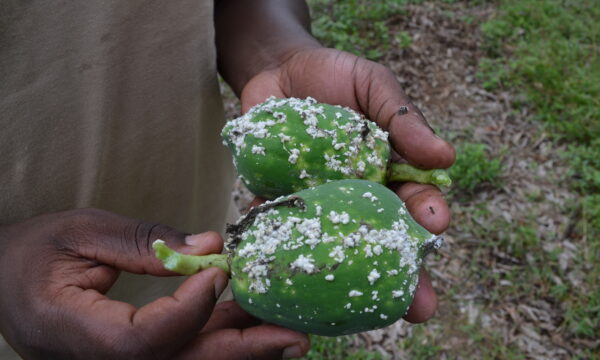Himalayan balsam infected with Puccinia rust – a method of biocontrol being used in the UK. Photo credit: Rob Tanner © CABI
The fifth edition of Biological Control of Weeds: A World Catalogue of Agents and Their Target Weeds has been released after years of literature searches and the involvement of 125 weed biocontrol specialists.
The publication of this catalogue, available as a searchable online database and as a PDF book, was led by Mark Schwarzländer, University of Idaho CALS professor of entomology and biological control of weeds (and a former CABI researcher), and current CABI biological weed researcher, Hariet Hinz. Several prominent invasive species researchers co-edited the catalogue, including CABI’s Chief Scientist, Matthew Cock.
A natural enemy (Aphalara itadori) of Japanese knotweed, that was released in England and Wales as a means of biological control. Photo credit: Rene Eschen © CABI
The catalogue reports over 2000 instances where biological control agents have been released, which target species they were released for, and the level of success this release had (whether the agent became established, its abundance etc.).
Two recent biocontrol releases include the release of a psyllid (Aphalara itadori) in England and Wales to control Japanese knotweed, and the release of a Puccinia species of rust fungus to control Himalayan balsam.
The editors aim to produce the next edition of this valuable resource in five years’ time.
1 Comment
Leave a Reply
Related News & Blogs
Parasitic wasps play pivotal role in Kenya’s papaya mealybug control
Papaya mealybug (Paracoccus marginatus) is a devastating papaya pest. It impacts many countries in East and West Africa. Infestations can result in significant economic losses, posing a threat to the livelihoods of smallholder farmers. On average, the…
15 April 2024





Reblogged this on CABI Invasives Blog.